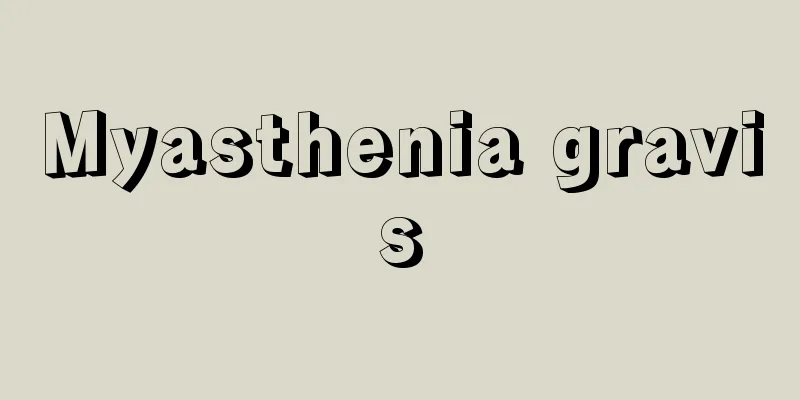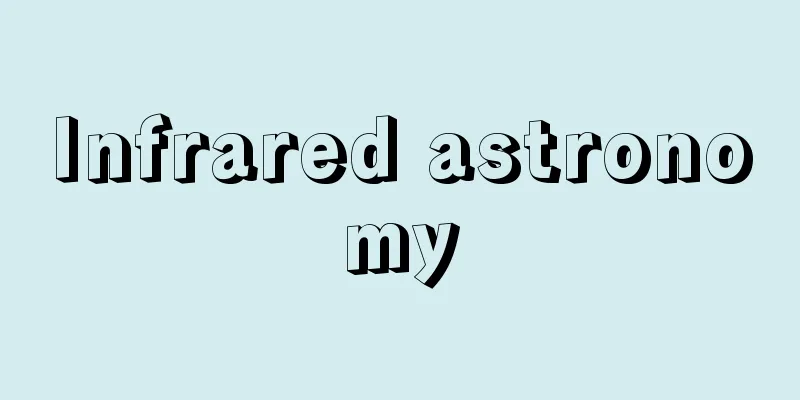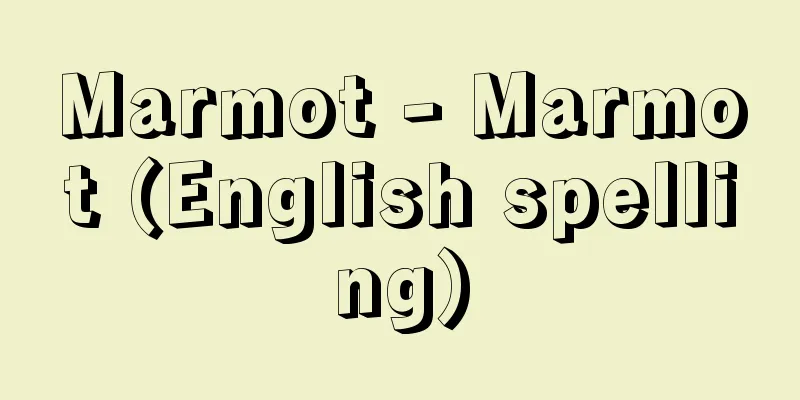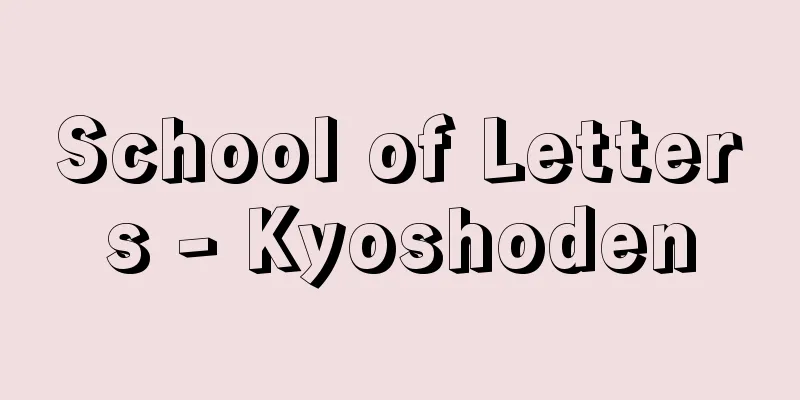Myasthenia gravis

|
Concept Myasthenia gravis (MG) is an autoantibody-dependent neurological disorder in which impairs transmission of stimuli due to an autoimmune mechanism against the postsynaptic membrane of the neuromuscular junction, resulting in fatigue and weakness of skeletal muscles. Clinically, the disease is characterized by recovery with rest, diurnal variation, and remission and exacerbation. The main pathogenic factor is autoantibodies against functional proteins present in the postsynaptic membrane, such as acetylcholine receptor (AChR) and muscle-specific receptor tyrosine kinase (MuSK) (Farrugia, 2010). Epidemiology : A 2006 clinical epidemiological survey of MG in Japan estimated the approximate number of patients to be 15,100 (5,600 men and 9,500 women), with a prevalence of 11.8 per 100,000 population. The male to female ratio was 1:2, and the mean ± standard deviation of age at onset was 42.7 ± 21.2 years. There has been a particular increase in MG patients over the age of 50 (late-onset MG). In response to this, the Japanese Society of Neurological Therapeutics published standard treatment guidelines in 2010 outlining approaches to the diagnosis and treatment of late-onset MG. Etiology, pathology, and pathologyMG is classified into 1) AChR antibody-positive MG, 2) MuSK antibody-positive MG, and 3) double seronegative MG, in which the above antibodies are not detected, according to the type of autoantibody. In 2011, autoantibodies against LDL-receptor related protein 4 (Lrp4) were reported, and they have attracted attention as the third pathogenic autoantibody after AChR/MuSK antibodies. In Japan, approximately 80% of all MG cases are AChR antibody-positive, and the remaining 5-10% have MuSK/Lrp4 antibodies. The mechanism of action of autoantibodies is that AChR antibodies, mainly IgG1, cause MG symptoms by destroying the motor endplates in a complement-mediated manner. On the other hand, the subclass of anti-MuSK antibodies, mainly IgG4, has been reported to cause neuromuscular junction pathological images with almost no complement-mediated motor endplate destruction (Figures 15-20-1, 15-20-2). Classification : Classification is based on the autoantibodies and clinical disease type mentioned above. In the past, the Osserman classification published in 1971 was often used, but in 2000, the Myasthenia Gravis Foundation of America (MGFA) proposed the MGFA Clinical Classification as a scale of clinical symptoms or severity to standardize clinical research worldwide. Currently, this classification is commonly used and is also used in the specific disease clinical survey individual form in Japan, but it is used more as an index of severity rather than a classification. Specifically, class I is ocular muscle type, and class II and above are generalized type, with a classification if there is severe muscle weakness in the limb muscles and trunk muscles, and b if there are severe bulbar symptoms. The progression from II to V becomes more severe, and at V, the patient is in a state of endotracheal intubation. In addition, 10-15% of newborns born to mothers with this disease have a transient form of this disease caused by antibodies that cross the placenta, and this is called neonatal transient myasthenia gravis. Recently, there have been sporadic reports of neonatal transient myasthenia gravis in patients with MuSK antibody-positive MG. Clinical symptoms AChR antibody-positive MG is characterized by the tendency for the extraocular muscles to be affected. It begins with eye symptoms such as double vision (diplopia) and involuntary drooping of the eyelids (ptosis), which are present in most cases throughout the course of the disease. In addition to eye symptoms, early symptoms often include speech disorders, swallowing disorders, and quadriplegia. The disease is characterized by muscle weakness caused by repeated movement that improves with rest (easy fatigability), and symptoms that tend to appear more frequently in the evening than in the morning (diurnal variation). Factors that aggravate the disease include stress, infection, menstruation, pregnancy, and childbirth, which can lead to acute exacerbations (crises) in which dysphagia and dyspnea rapidly worsen. MuSK antibody-positive MG is not associated with thymoma, is prone to muscle atrophy, and is characterized by a tendency for the disease to progress to crises, with swallowing disorders being the main symptom. However, it is difficult to distinguish between AChR antibodies and MuSK antibodies at the clinical level. Test results 1) Edrophonium chloride (Tensilon, Antirex) test: The cholinesterase inhibitor Antirex, 2-5 mg, is administered intravenously to observe the response. A positive result is when there is a marked improvement in clinical symptoms. If the MuSK antibody test is positive, the result is rarely marked, and hypersensitivity reactions may occur. 2) Electrophysiological testing: In the Harvey-Masland test, in which peripheral nerves controlling the muscles of the face and limbs are repeatedly stimulated and evoked muscle action potentials are recorded, a waning phenomenon (the amplitude of the initial stimulus is almost normal, but after several subsequent stimuli the amplitude attenuates by 10% or more) is observed with low-frequency stimulation (1-5 Hz). Furthermore, abnormal jitter (variation in the firing interval) and blocking phenomena are observed in single-fiber electromyograms. 3) Autoantibody measurement: AChR receptors are positive in over 80% of all MG cases. However, in ocular muscle-type MG, the positivity rate is low at approximately 50%. Approximately 30-60% of AChR antibody-negative patients test positive for MuSK antibodies. Regarding the correlation between AChR antibody titer and MG symptoms, there are cases where antibody titer correlates with disease severity when viewed over time in individual cases, but when viewing patients as a group, there is no correlation between antibody titer and disease severity. On the other hand, it has been reported that MuSK antibody titer correlates with disease severity. 4)Other: In AChR antibody-positive MG, thymoma or thymic hyperplasia is often present, so these are evaluated using chest CT/MRI imaging tests. Diagnosis: The diagnosis is based on the clinical symptoms, neurological examination, and laboratory findings described above. In particular, a positive test for pathogenic AChR/MuSK antibodies can be considered definitive. Differential diagnosis: It is necessary to differentiate between the many diseases that present with ophthalmoplegia, bulbar palsy, and limb and trunk muscle weakness. Focusing on ophthalmoplegia, many diseases that present with ophthalmoplegia, such as oculomotor nerve palsy due to aneurysm (IC-PC) or diabetes, Fisher syndrome, Tolosa-Hunt syndrome, mitochondrial encephalomyopathy, oculopharyngeal dystrophy, Meige syndrome, and apraxia of eye opening, are candidates for the differential diagnosis. In the case of bulbar palsy, it is necessary to differentiate between amyotrophic lateral sclerosis, multiple sclerosis, and brainstem encephalitis, while in the case of limb muscle weakness, it is necessary to differentiate between Guillain-Barré syndrome, polymyositis, muscular dystrophy, and Lambert-Eaton myasthenic syndrome. Complications Thymoma is seen in 20-30% of cases, with a peak incidence at age 50. Thyroid diseases such as Basedow's disease occur in a few percent to several tens of percent of cases. Other complications include autoimmune diseases such as pure red cell aplasia, systemic lupus erythematosus, and rheumatoid arthritis. Treatment with cholinesterase inhibitors, thymectomy (chest removal), steroids, immunosuppressants (tacrolimus, cyclosporine), plasma exchange, and high-dose intravenous immunoglobulin therapy (approved in 2010) are covered by insurance. In cases with thymoma, thoracotomy is performed. In cases without thymoma, on the other hand, each case must be carefully considered based on age, duration of disease, disease type, severity, thymic images, type of autoantibody, and complications. Previously, thoracotomy was considered the first choice for systemic MG, but it was found that there was no useful evidence for this, and clinical trials and MGTX studies are currently underway to obtain evidence. At present, the frequency of thymic abnormalities is low in elderly-onset MG, and thymectomy should be performed with caution. In ocular MG, some cases undergo spontaneous remission, and thoracotomy should not be performed, at least in the early stages of onset. For six months to a year, patients are treated medically with cholinesterase inhibitors and corticosteroids, and thoracotomy is considered for patients with recurrent or refractory eye symptoms or who have progressed to a systemic form. Thoracotomy is less effective in patients with MuSK antibody-positive MG, and is not the first choice. Details of treatment methods are summarized on the website of the Japanese Society of Neurotherapeutics in the "Guidelines for the Treatment of MG" and "Standard Neurotherapeutic Treatment: Elderly-onset MG". The biggest problem in clinical MG is a sudden muscle weakness that leads to respiratory distress, known as a crisis. There are two types of crisis: myasthenic and cholinergic. If the patient improves with the Tensilon test, the crisis can be diagnosed as myasthenic, but in reality, it is often difficult to distinguish between the two. Therefore, it is important to immediately discontinue cholinesterase inhibitors, secure the airway, and manage the respiratory system. Steroids are often used for a long period of time, and are often administered in combination with osteoporosis prevention and infection prevention drugs. Caution is required as there are many medications that are contraindicated for use with MG (e.g., benzodiazepines, aminoglycoside antibiotics, dantrolene sodium, d-penicillamine, interferon-α, etc.). Prognosis The natural course of MG is unclear, but a review of cases before 1965 showed that with treatment with cholinesterase inhibitors alone, approximately one-quarter of cases died of MG within three years of onset. Since then, the introduction of steroids and immunosuppressants has dramatically improved the prognosis of MG patients. However, the incidence of MG crisis in Japan has not decreased at all, reportedly reaching 16.0% (1973), 14.8% (1987), 10.9% (2002), and 13.3% (2006). In the future, it is hoped that treatments for this type of severe, intractable MG will be developed. [Motomura Masakatsu] ■ References Farrugia ME, Vincent A: Autoimmune mediated neuromuscular junction defects. Curr Opin Neurol, 23: 489-495, 2010. Motomura, Masakatsu, Shiraishi, Yuichi: Anti-MuSK antibody-positive myasthenia gravis. In Annual Review of the Neurology (edited by Suzuki, Norihiro, Sobue, Hajime, et al.), pp328-336, Chugai Medical Press, Tokyo, 2011. Masakatsu Motomura, Taku Fukuda: [Neuromuscular junction: from basics to clinical practice] Lambert-Eaton myasthenic syndrome. Brain Nerve, 63: 745-754, 2011. Shiraishi H, Motomura M, et al: Acetylcholine receptors loss and postsynaptic damage in MuSK antibody-positive myasthenia gravis. Ann Neurol, 57: 289–293, 2005. Source : Internal Medicine, 10th Edition About Internal Medicine, 10th Edition Information |
|
概念 重症筋無力症(myasthenia gravis:MG)は,神経筋接合部の後シナプス膜に対する自己免疫機序により刺激伝達が障害され,骨格筋の易疲労性・脱力をきたす自己抗体依存性神経疾患である.臨床的には,休息による回復,日内変動,および,寛解・増悪を特徴とする.後シナプス膜に存在するアセチルコリン受容体(acetylcholine receptor:AChR)や筋特異的受容体型チロシンキナーゼ(muscle-specific receptor tyrosine kinase:MuSK)などの機能蛋白質に対する自己抗体がおもな発症因子である(Farrugia,2010). 疫学 わが国の2006年MG臨床疫学調査では,患者概数15100人(男性5600人,女性9500人),有病率は人口10万人あたり11.8人と推測されている.男女比は1:2で,発症年齢の平均±標準偏差は,42.7±21.2歳であった.特に,50歳以上で発症するMG患者(late-onset MG)が増加していることが明らかになった.それに伴って,2010年日本神経治療学会から,late-onset MGの診断と治療の考え方を示す標準的治療指針が公表された. 病因・病態・病理 MGは自己抗体の種類によって,①AChR抗体陽性MG,②MuSK抗体陽性MG,そして,③前記の抗体が検出されないdouble seronegative MGに分類される.2011年,LDL受容体関連蛋白質4(LDL-receptor related protein 4:Lrp4)に対する自己抗体が報告され,AChR/MuSK抗体に次ぐ第3番目の病原性自己抗体として注目されている.わが国では,MG全体の約80%がAChR抗体陽性で,残りの5〜10%にMuSK/Lrp4抗体が検出される.自己抗体の作用機序は,IgG1が主体のAChR抗体は補体介在性に運動終板を破壊することによってMG症状を起こす.一方,抗MuSK抗体のサブクラスはIgG4が主体で補体介在性運動終板破壊がほとんどない神経筋接合部病理像が報告されている(図15-20-1,15-20-2). 分類 前記の自己抗体や臨床病型などによる分類がある.以前は1971年に発表されたOsserman分類がよく用いられていたが,2000年,米国重症筋無力症財団(Myasthenia Gravis Foundation of America:MGFA)より臨床研究を世界的に標準化するための臨床症状もしくは重症度に関するスケールとしてMGFA Clinical Classificationが提唱された.現在は本分類が一般的となっており,わが国の特定疾患臨床調査個人票でも用いられているが,どちらかというと分類ではなく重症度の指標として使用されている.具体的には,クラスⅠが眼筋型,クラスⅡ以降が全身型で,四肢筋,体幹筋の筋力低下が強ければaとなり,球症状が強ければbとなる.ⅡからⅤへ進むにつれて重症となり,Ⅴは気管内挿管された状態である.また,本症の母親から生まれる新生児の10~15%に胎盤を通過した抗体による一過性の本症がみられ,新生児一過性重症筋無力症といわれる.最近,MuSK抗体陽性MG患者からも新生児一過性重症筋無力症の報告が散見されている. 臨床症状 AChR抗体陽性MGの症状は,外眼筋が障害されやすい.物が二重に見えたり(複視),まぶたが無意識に下がったままの状態(眼瞼下垂)などの眼症状で発症し,全経過中ほとんどの症例にみられる.眼症状以外には,構音障害,嚥下障害,四肢麻痺が初期症状として多い.運動を反復することにより筋力低下をきたし休息によって改善する(易疲労性),朝より夕方に症状が出やすい(日内変動)などが特徴である.増悪因子として,ストレス,感染,月経,妊娠,分娩などがあげられ,これらを契機に嚥下困難や呼吸困難が急速に悪化する急性増悪(クリーゼ)に移行する. MuSK抗体陽性MGは,胸腺腫の合併はなく,筋萎縮を伴いやすく,嚥下障害が主体でクリーゼになりやすいという特徴をもつが,臨床レベルでAChR抗体かMuSK抗体かを鑑別することは困難である. 検査成績 1)塩化エドロホニウム(テンシロン,アンチレクス)試験: コリンエステラーゼ阻害薬であるアンチレクス2~5 mgを静脈注射して反応をみる.臨床症状の著明な改善があるときを陽性とする.MuSK抗体陽性では,著効することは少なく,過敏反応がみられることがある. 2)電気生理学的検査: 顔面や四肢の筋を支配する末梢神経を反復刺激して,誘発筋活動電位を記録するHarvey-Masland試験では,低頻度刺激(1~5 Hz)でwaning 現象(初発刺激による振幅はほぼ正常で以後数発の刺激で振幅が10%以上減衰する)がみられる.また単一筋線維筋電図では,jitter(発射間隔の変動)の異常やブロッキング現象がみられる. 3)自己抗体測定: AChR受容体は,MG全体の80%以上で陽性となる.ただし眼筋型では陽性率は約50%と低い.AChR抗体陰性患者のうち30~60%程度でMuSK抗体が陽性となる.AChR抗体価とMG症状の相関は,個々の症例で経時的にみると抗体価と疾患の重症度が相関する例があるが,患者を集団でみると抗体価と重症度は相関しない.一方,MuSK抗体価では抗体価と重症度は相関すると報告されている. 4)その他: AChR抗体陽性MGでは,胸腺腫や胸腺過形成が存在することが多いため,胸部CT/MRI画像検査 などで評価する. 診断 上記の臨床症状,神経学的診察,および,検査所見に基づいて診断する.特に,病原性のあるAChR/MuSK抗体が陽性となれば確定と考えてよい. 鑑別診断 眼症状,球麻痺,および,四肢・体幹の筋力低下を呈する多くの疾患を鑑別する必要がある.眼症状に着目すれば,眼筋麻痺を呈する多くの疾患,動脈瘤(IC-PC)や糖尿病による動眼神経麻痺,Fisher 症候群,Tolosa-Hunt 症候群,ミトコンドリア脳筋症,眼・咽頭型ジストロフィー,Meige症候群,開眼失行などが鑑別の対象となる.球麻痺では,筋萎縮性側索硬化症,多発性硬化症,脳幹脳炎など,四肢筋力低下については,Guillain-Barré症候群,多発筋炎,筋ジストロフィー,そして,Lambert-Eaton 筋無力症候群などの鑑別が必要である. 合併症 胸腺腫は50歳をピークに20~30%にみられる.Basedow病などの甲状腺疾患が数%から十数%に合併する.それ以外に,赤芽球癆,全身性エリテマトーデス,関節リウマチなどの自己免疫疾患を合併する. 治療 コリンエステラーゼ阻害薬,胸腺摘除術(胸摘),ステロイド薬,免疫抑制薬(タクロリムス,シクロスポリン),血漿交換,そして,大量免疫グロブリン静注療法(2010年認可)などが保険適応として用いられている.胸腺腫合併例では,胸摘を行う.一方,胸腺腫非合併では,年齢,罹病期間,病型,重症度,胸腺画像,自己抗体の種類,そして合併症によって個々の症例で十分に検討されなければならない.以前には,全身型では胸摘を第一選択すべきとされてきたが,これに関しては有用なエビデンスがないことが判明し,現在,そのエビデンスを得るために治験,MGTX研究が進行中である.現状では,高齢発症MGでは胸腺異常の頻度は低く,胸腺摘除に関しては慎重であるべきである.眼筋型MGでは,その一部に自然寛解もあり,胸摘の施行は少なくとも発症初期には行うべきではない.半年から1年間はコリンエステラーゼ阻害薬や副腎皮質ホルモンで内科的に治療し,眼症状の再燃・難治例や全身型へ移行した例を中心に胸摘の適応を検討する.また,MuSK抗体陽性MGでは胸摘の有効性は低く,第一選択にはならない.治療法の詳細については神経治療学会のホームページに「MG治療のガイドライン」と「標準的神経治療:高齢発症MG」としてまとめられている. MGの臨床で一番問題になるのは,急激な筋力低下をきたし呼吸困難に陥ることがありクリーゼとよばれる.クリーゼには筋無力性とコリン作動性の2種類があり,テンシロン試験で改善すれば筋無力性と診断できるが,実際には区別が困難な場合が多い.よって,コリンエステラーゼ阻害薬はただちに中止し,気道を確保し呼吸管理を行うことが重要である.また,長期にステロイドを使用する場合が多く,骨粗鬆症予防や感染予防薬の投与を併用する.MGには,使用禁忌薬剤(ベンゾジアゼピン系薬,アミノ配糖体系抗菌薬,ダントロレンナトリウム,d-ペニシラミン,インターフェロン-αなど)が多数あるため注意を要する. 予後 MGの自然経過は明らかではないが,1965年以前の症例の検討によるとコリンエステラーゼ阻害薬のみの治療では約1/4の症例がMGのため発症3年以内に死亡している.その後,ステロイドと免疫抑制薬の導入により,MG患者の生命予後は劇的に改善した.ただし,わが国のMGクリーゼの頻度は,16.0%(1973年),14.8%(1987年),10.9%(2002年),13.3%(2006年)と報告され,まったく減少していない.今後は,このような重症かつ難治性MGにおける治療法の開発が期待される.[本村政勝] ■文献 Farrugia ME, Vincent A : Autoimmune mediated neuromuscular junction defects. Curr Opin Neurol, 23: 489-495, 2010. 本村政勝,白石裕一:抗MuSK抗体陽性重症筋無力症.In Annual Review 神経(鈴木則宏,祖父江 元,他編)pp328-336,中外医学社,東京,2011. 本村政勝,福田 卓:【神経筋接合部 基礎から臨床まで】 Lambert-Eaton筋無力症候群.Brain Nerve, 63: 745-754, 2011. Shiraishi H, Motomura M, et al: Acetylcholine receptors loss and postsynaptic damage in MuSK antibody-positive myasthenia gravis. Ann Neurol, 57: 289–293, 2005. 出典 内科学 第10版内科学 第10版について 情報 |
<<: Mercantilism (English spelling)
Recommend
Leg length - Kashicho
…Upper limb length (acromion height – middle fing...
Ryugado Cave
A limestone cave (natural monument and historic si...
Karakhan, LM (English spelling) KarakhanLM
…It is a declaration by the government of the Rep...
Entsuji Temple Garden
...A temple of the Myoshinji school of the Rinzai...
Kakitsu Rebellion
This refers to the incident that occurred on June...
Katsuura [city] - Katsuura
A city facing the Pacific Ocean in southern Chiba ...
Miikedaira Tomb - Miikedaira Tomb
It is an early-style keyhole-shaped tumulus locat...
North Canton Mountains
…Excluding the South China Sea Islands, the area ...
Morpho patroclus (English spelling) Morphopatroclus
…[Mayumi Takahashi]. . . *Some of the terminology...
Coordination compound - Coordination compound
Complex compound is sometimes used synonymously w...
Anna Christie
…His realist style, which was rare in American th...
A personal observation - Kankenki
This is the general term for all 105 volumes of a...
Oobaasagara - Oobaasagara
...The sapwood is white and wide, and is used for...
Messner, Reinhold
Born September 17, 1944 in Bressanone, Italy. Moun...
Wage drift - Chingin drift (English spelling)
When a wage agreement concluded through collective...







![Minnesota [State] - Minnesota](/upload/images/67ccf4c9ddaa4.webp)

